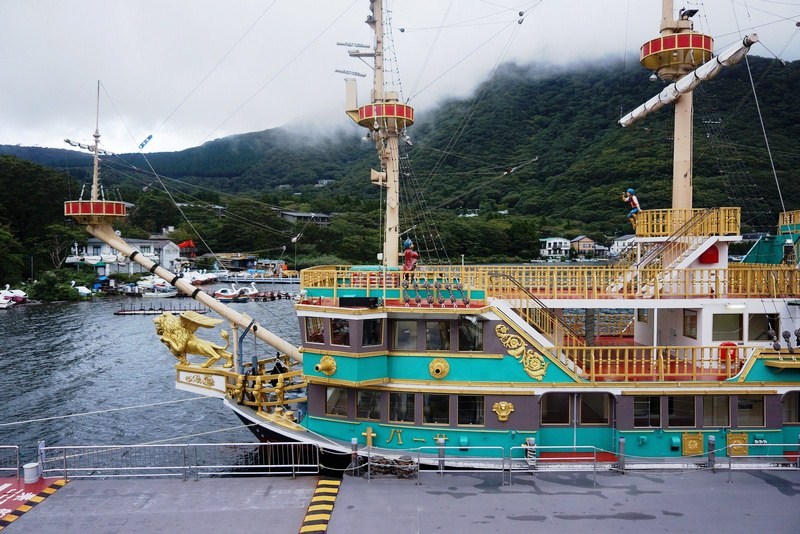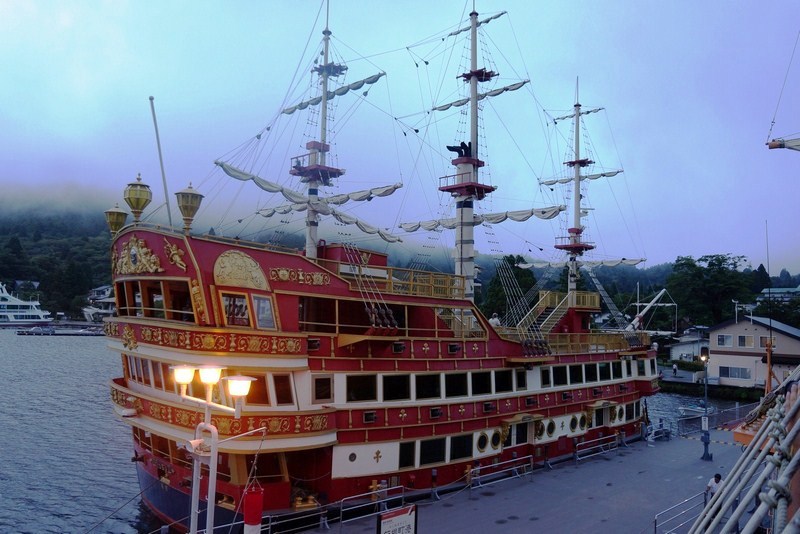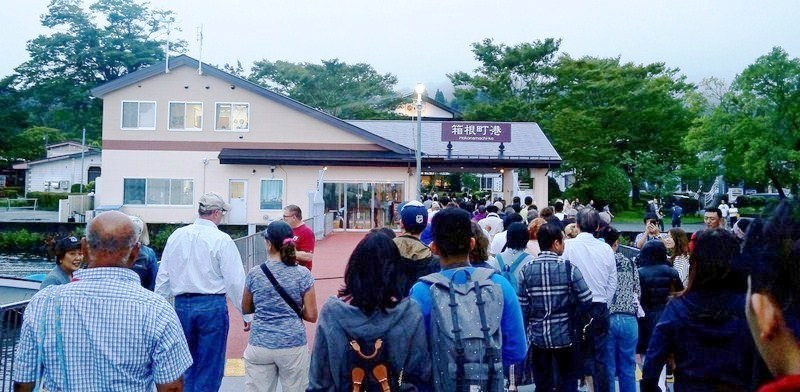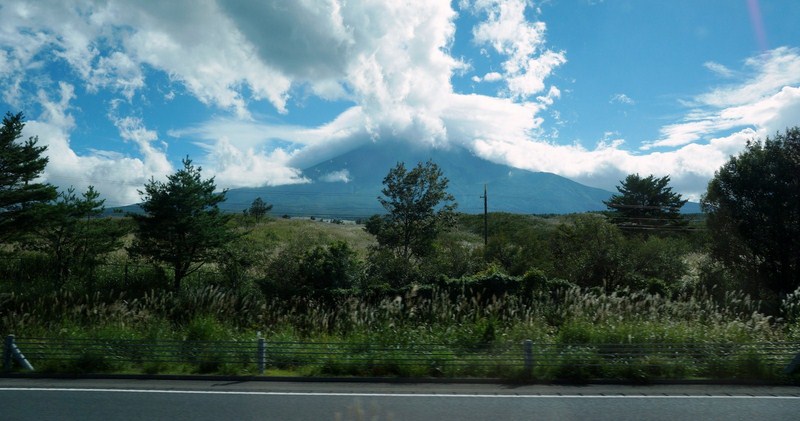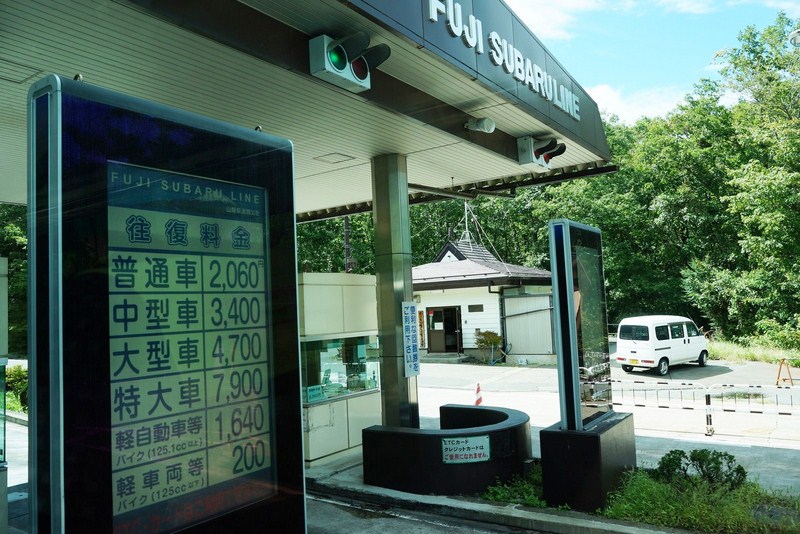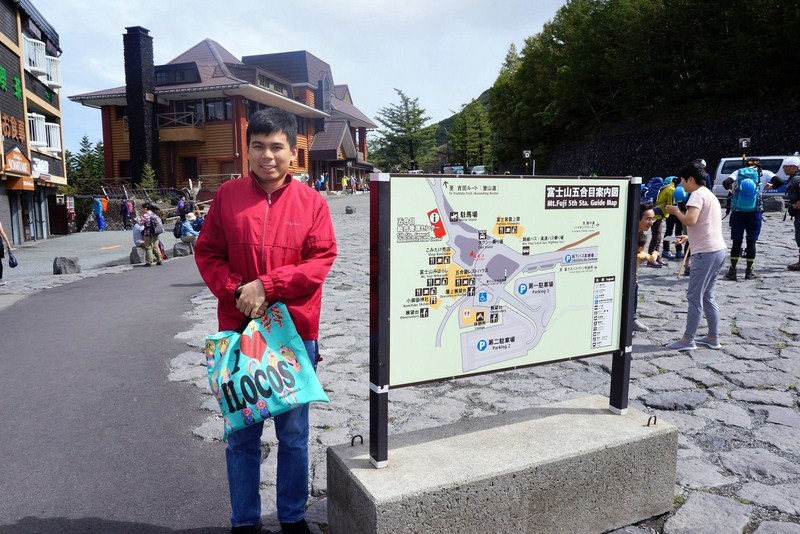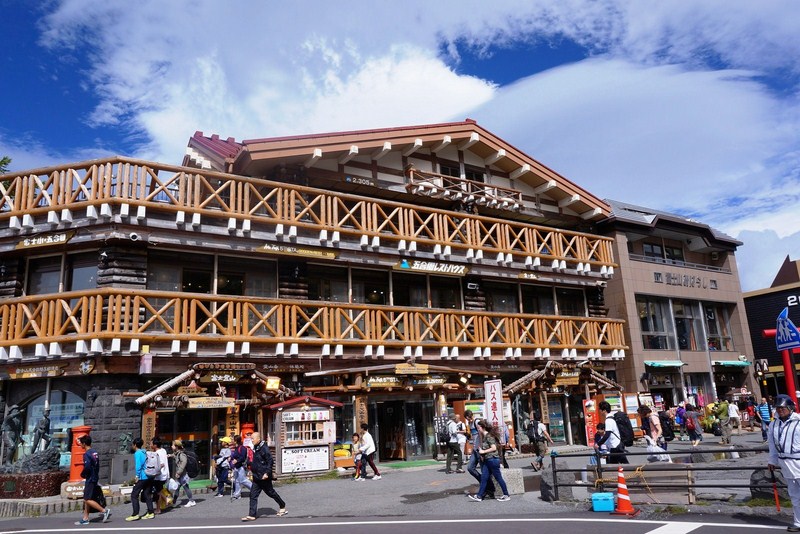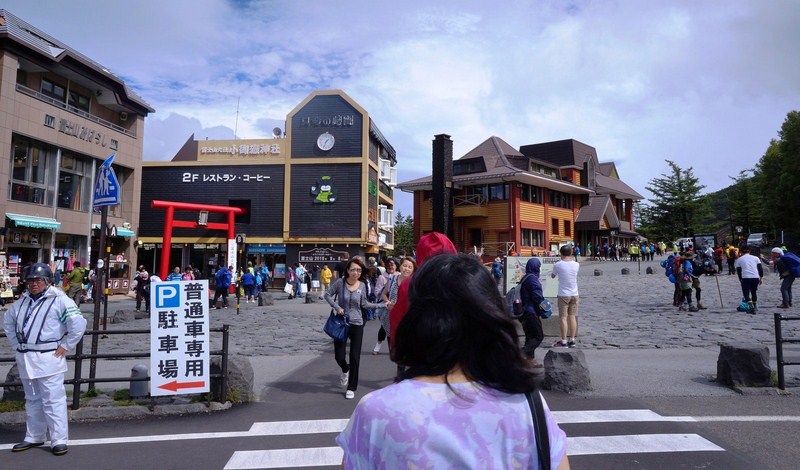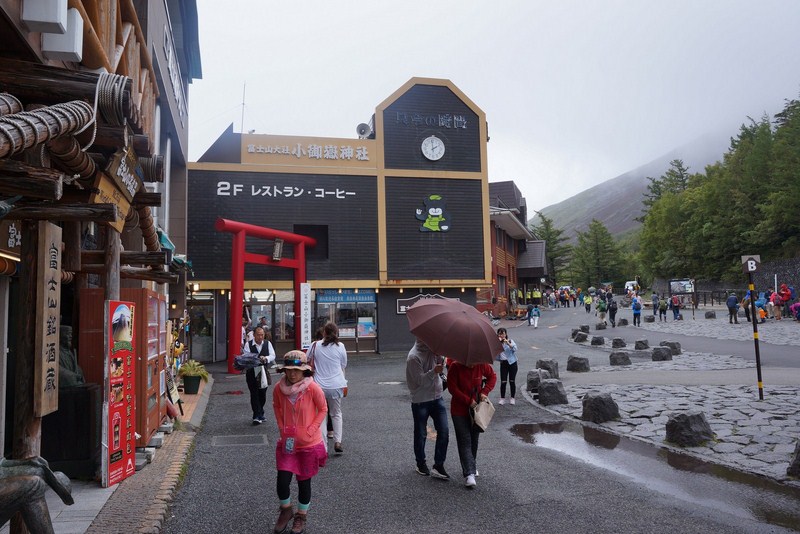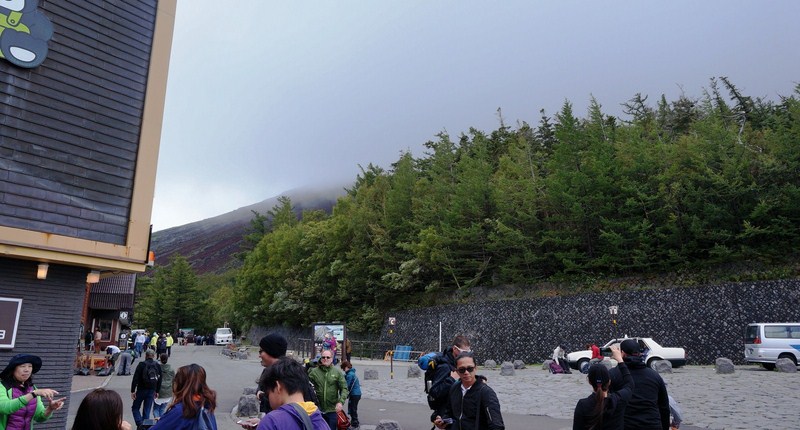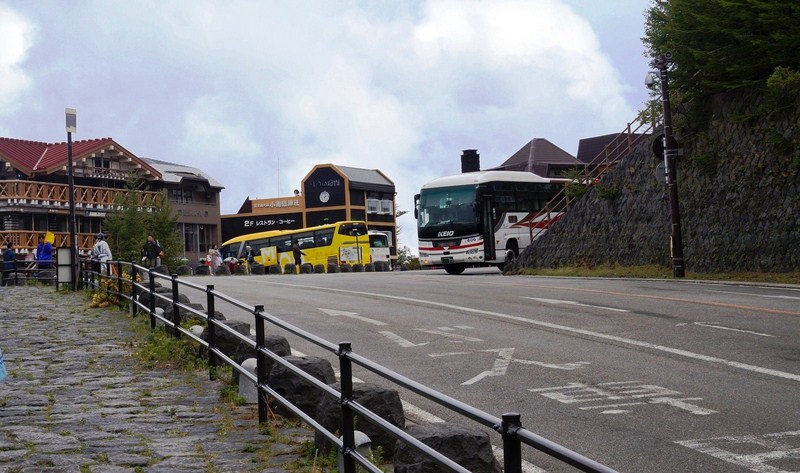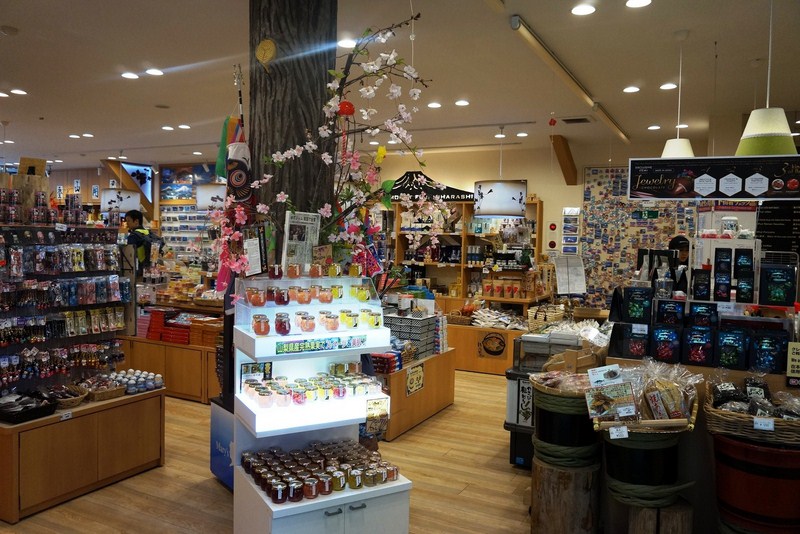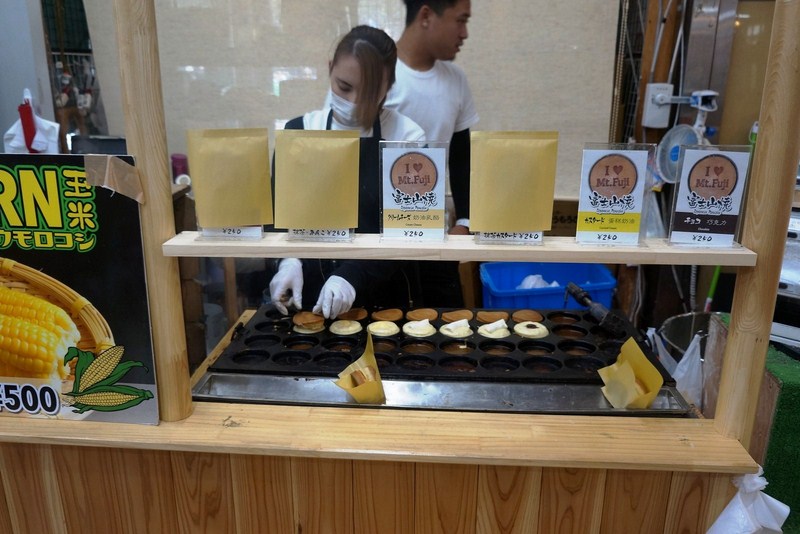We just finished our late lunch at Izumi Restaurant at Gotemba and we all had to rush back to our bus for the 30-min. drive to the Hakone area of Kanagawa Prefecture if we were to catch the last 4:30 PM ferry tour of Lake Ashinoko (芦ノ湖). It was still rainy when we left the restaurant. The lake is located on the Tōkaidō road, the main link between Kyoto and Tokyo. The bus made it just in time to Togendai-ko Harbor, the sightseeing boat pier at the lake’s northern shores.
The scenic Lake Ashinoko, also referred to as Hakone Lake or Lake Ashi, is a crater lake 720 m. above sea level that lies along the southwest wall of the caldera of Mount Hakone, a complex volcano that last erupted in 1170 CE at Owakudani. The name Ashinoko means “lake of reeds” in Japanese – ashi (芦) means “reed” while ko (湖 means “lake.”
The lake, situated some 723 m. above sea level, is the largest lake in Kanagawa prefecture. With an area of 7 sq. kms., it extends 7 kms. from north to south and has a circumference of 19 kms. It is known for its views of Mt. Fuji, its numerous hot springs, historical sites and ryokan (inns).
At Togendai-ko Harbor, we all boarded the Victory (modelled after the 18th century British warship, the HMS Victory) one of three ships inspired by the design of sailing warships (the other two are Royal II, a replica of the 18th century French warship, the Royal Louis, and Vasa, a replica of the 17th century Swedish warship) of Hakone Sightseeing Boats, one of two companies (the other is Izuhakone Sightseeing Boats), that operate pleasure boats that traverse and cruise the gorgeous lake between four ports (Moto-Hakone and Hakone-machi and Togendai and Kojiri) at the lake’s northern end.
It stopped raining when we left the pier but the skies were still overcast. The boat cruise from one end of the lake to the other takes roughly 30 minutes. The lake, with Mount Fuji in the background, is the symbol of Hakone. However, as with our tour of Mt. Fuji, clouds and poor visibility block our view of the mountain. Visibility tends to be better during the colder seasons of the year than in summer, and in the early morning and late afternoon hours.
Still, the view and cool breeze from the wide open-air decks, with plenty of comfortable viewing spots, was still scenic, with small towns in the east and north and a couple of lakeside resort hotels lining the shoreline framed by the nearby mountain range that includes the famous Mt. Fuji. Legend has it that Lake Ashinoko was home to a nine-headed dragon which is presented with an offering of traditional red rice at the Hakone Shrine Lake Ashi Festival on July 31 every year.
Our tour ended at Hakonemachi-ko Port, at the lake’s southern shore, where our bus waited for us. On our way back to Tokyo, our bus made a short stopover at Odawara Shinkansen Station where a number of passengers took the super fast shinkansen bullet train back to Tokyo.
Outside the west exit of the station is a bronze equestrian statue of Hojo Soun (1432-1519), first head of the Later Hojo clan, one of the great powers of the Sengoku period. It shows him with flaming torches tied to his oxen and fooling his opponents that his troops were three times more than what he actually had.
Back on our bus, we continued on our long haul drive back to Tokyo. Once in Tokyo, we made a number of stopovers at a number of hotels to drop off passengers before being dropped off at the Akasaka Excel Hotel.
Lake Ashinoko: Hakone, Hakone-machi, Ashigarashimo-gun 250-0521, Kanagawa Prefecture.
How to Get There: Frequent buses connect Odawara, via Hakone-Yumoto, with Moto-Hakone and Hakone-machi. The trip from Odawara takes about 50 mins. From Hakone-Yumoto, it takes about 35 mins. The Hakone Free Pass is valid on Hakone Tozan buses (bus line H) but not on Izuhakone buses (bus line Z).
There is also a frequently served Hakone Tozan Bus line from Odawara via Hakone-Yumoto to Togendai (bus line T). The trip also takes about 50 mins. and is also covered by the Hakone Free Pass. From Hakone-Yumoto it takes about 35 minutes.
A slow and scenic way of approaching Lake Ashinoko, from Odawara or Hakone-Yumoto, is taking the Hakone Tozan Railway to Gora, followed by a cable car and ropeway ride to Togendai. From Togendai, you can continue to Moto-Hakone or Hakone-machi by sightseeing boat . The whole journey is covered by the Hakone Free Pass.




